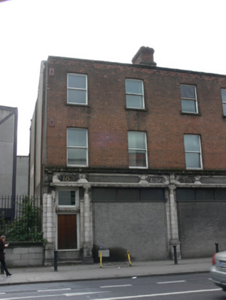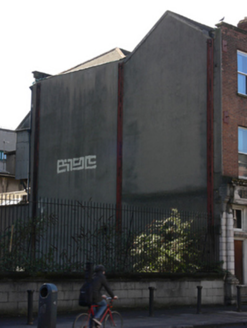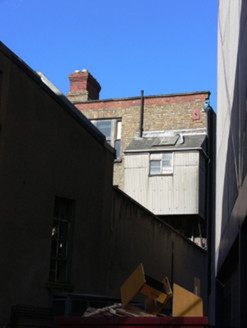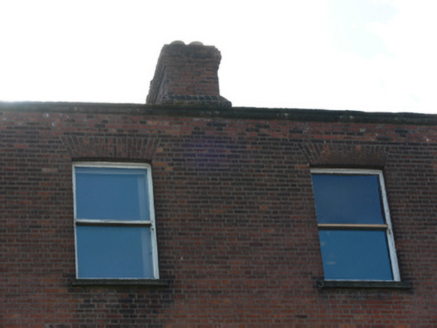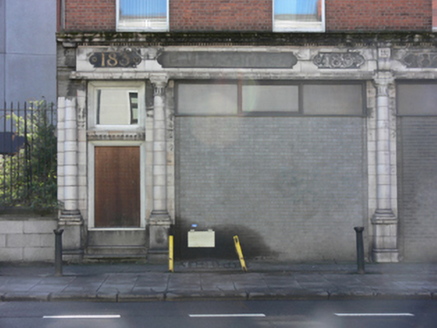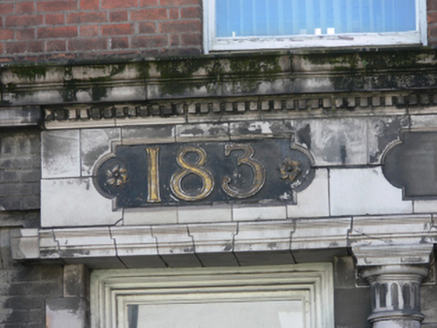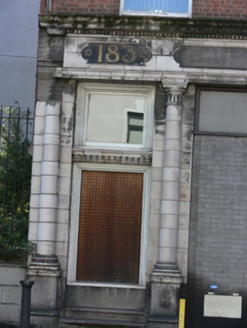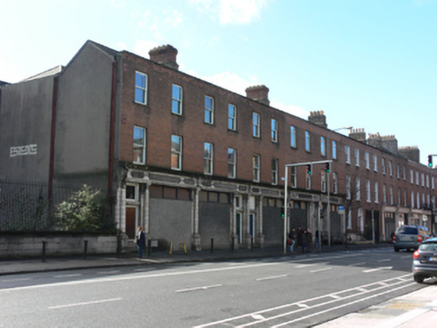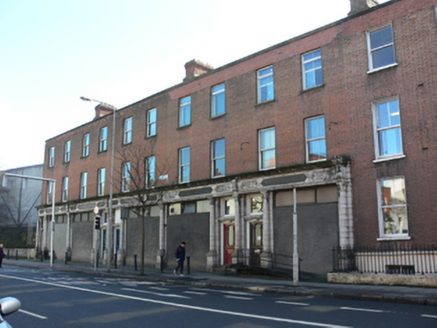Survey Data
Reg No
50020409
Rating
Regional
Categories of Special Interest
Architectural, Artistic, Historical, Social
Original Use
House
Historical Use
Shop/retail outlet
In Use As
Office
Date
1820 - 1830
Coordinates
316460, 234099
Date Recorded
11/03/2015
Date Updated
--/--/--
Description
Terraced two-bay three-storey over basement former house, built 1825, having shopfront to front (north) elevation added c.1905, and two-storey and single-storey extensions to rear (south) elevation. Now in use as part of college. M-profile pitched slate roof, hipped to rear to east, concealed behind rebuilt red brick parapet with carved granite coping, shared red brick chimneystack. Red brick, laid in Flemish bond, to front walls, with yellow brick laid in English garden wall bond, to rear walls, corrugated-iron walls to two-storey rear extension, and smooth render to single-storey extension and to side (east) walls. Square-headed window openings with granite sills having one-over-one pane timber sliding sash windows, Wyatt window to rear. Faience shopfront comprising Doric columns with fluted capitals, moulded console brackets, dentillated cornice over panelled fascia having numerals in relief with some gold leaf, and marigold detailing. Square-headed display window blocked. Square-headed door opening having fixed-pane timber framed overlight on dentillated cornice over replacement door. Apparently containing original joinery including window boxes, staircase and cornice to first and second floor interior. Street fronted to south of Pearse Street, recent steel-framed basement lights to pavement.
Appraisal
Numbers 183 to 187 were built as a single unit by John Manders, in partnership with Alderman Robert Smyth, in 1825, with an integral arch in number 182. The use of cheaper clamp kilned yellow brick to the rear, laid in English garden wall bond, which uses less bricks than Flemish bond, is a common feature of these ‘Manders format’ houses. Manders' influence can be seen in the design of other houses along the street. The well-executed later shopfront is a handsome and eyecatching later addition, while the retention of historic interior joinery adds to its character. Number 183 was the offices of McCarthy & O'Connell, architects, by the mid-nineteenth century. The British United Shoe Company commissioned 1947 a rear extension by Robinson & Keefe Great Brunswick Street was laid out by the Wide Street Commissioners in 1812 after long negotiations with Trinity College, whose grounds define the southern side of the street. Construction along the street continued for the next forty years. It was renamed in 1922 to commemorate William and Patrick Pearse, whose father had a business at number 27.

